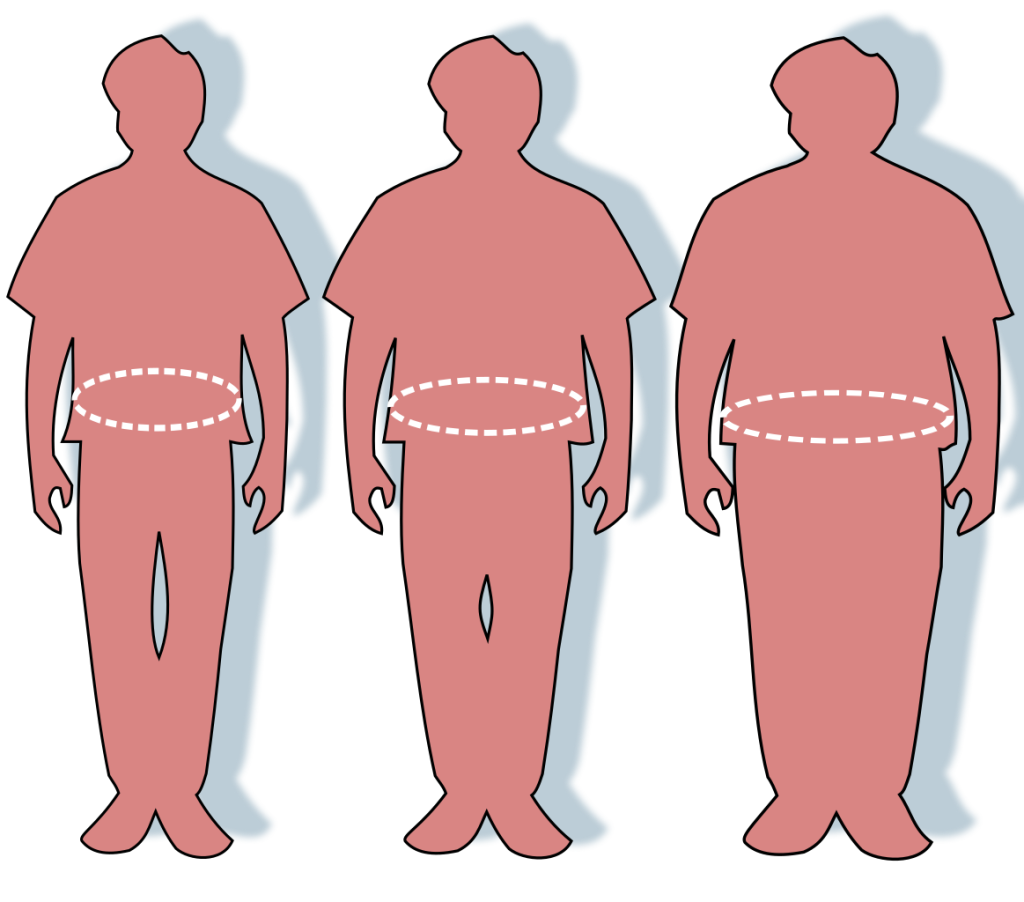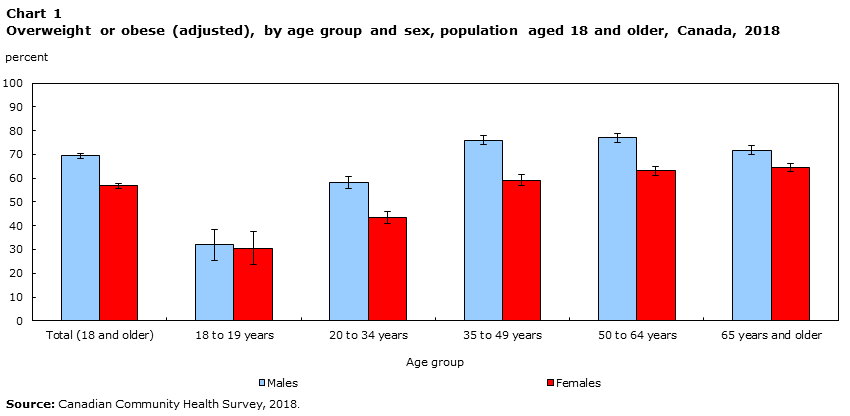106 Physical Development in Early and Emerging Adulthood
Martha Lally; Suzanne Valentine-French; and Dinesh Ramoo
Learning Objectives
- Summarize the overall physical growth in early adulthood
- Describe statistics, possible causes, and consequences of obesity
- Explain how early adulthood is a healthy yet risky time of life
- Identify the risk factors for substance use
- Describe the changes in brain maturation
- Define sexuality and explain the female and male reproductive systems
- Describe the brain areas and hormones responsible for sexual behaviour
- Identify sexually transmitted infections
- Describe cultural views related to sexuality
- Describe research on sexual orientation
The Physiological Peak
People in their mid-twenties to mid-forties are considered to be in early adulthood. By the time we reach early adulthood, our physical maturation is complete, although our height and weight may increase slightly. Those in their early twenties are probably at the peak of their physiological development, including muscle strength, reaction time, sensory abilities, and cardiac functioning. The reproductive system, motor skills, strength, and lung capacity are all operating at their best. Most professional athletes are at the top of their game during this stage, and many women have children in the early-adulthood years (Boundless, 2016).
The aging process actually begins during early adulthood. Around age thirty, many changes begin to occur in different parts of the body. For example, the lens of the eye starts to stiffen and thicken, resulting in changes in vision (usually affecting the ability to focus on close objects). Sensitivity to sound decreases; this happens twice as quickly for men as for women. Hair can start to thin and become grey around age thirty-five, although this may happen earlier for some individuals and later for others. The skin becomes drier and wrinkles start to appear by the end of early adulthood. This includes a decline in response time and the ability to recover quickly from physical exertion. The immune system also becomes less adept at fighting off illness, and reproductive capacity starts to decline (Boundless, 2016).
Obesity
Although at the peak of physical health, a concern for early adults is the current rate of obesity. Results from the 2015 National Center for Health Statistics indicate that an estimated 70.7 percent of US adults aged twenty and over are overweight and 37.9 percent are obese (CDC, 2015b). Body mass index (BMI), expressed as weight in kilograms divided by height in meters squared (kg/m2), is commonly used to classify those who are overweight (BMI of 25.0 to 29.9), obese (BMI greater than or equal to 30.0), and extremely obese (BMI greater than or equal to 40.0). The 2015 statistics showed an increase from 2013–2014, indicating that an estimated 35.1 percent of US adults were obese, and 6.4 percent extremely obese (Fryar, Carroll, and Ogden, 2014). In 2003–2004, 32 percent of US adults were identified as obese. The CDC also indicated that one’s twenties are the prime time to gain weight as the average person gains 1 to 2 lb per year from early adulthood into middle adulthood. The average man in his twenties weighs around 185 lb, and by his thirties weighs approximately 200 lb. The average American woman weighs 162 lb in her twenties and 170 lb in her thirties.

The American obesity crisis is also reflected worldwide (Wighton, 2016). In 2014, global obesity rates for men were measured at 10.8 percent and among women 14.9 percent. This translates to 266 million obese men and 375 million obese women in the world, and more people were identified as obese than underweight. Although obesity is seen throughout the world, more obese men and women live in China and the US than in any other country. Figure 7.6 illustrates how waist circumference is also used as a measure of obesity. Figure 7.7 demonstrates the percentage growth for men and women identified as overweight or obese in different age groups in Canada.

Causes of obesity: According to the Centers for Disease Control and Prevention (CDC) (2016), obesity originates from a complex set of contributing factors, including one’s environment, behaviour, and genetics. Societal factors include culture, education, food marketing and promotion, the quality of food, and the physical activity environment available. Behaviours leading to obesity include diet, physical activity levels, and medication use. Lastly, there does not appear to be a single gene responsible for obesity. Rather, research has identified variants in several genes that may contribute to obesity by increasing hunger and food intake. Another genetic explanation is the mismatch between today’s environment and “energy-thrifty genes” that multiplied in the distant past, when food sources were unpredictable. The genes that helped our ancestors survive occasional famines are now being challenged by environments in which food is plentiful all the time. Overall, obesity most likely results from complex interactions among the environment and multiple genes.
Obesity health consequences: Obesity is considered to be one of the leading causes of death in the United States and worldwide. Additionally, the medical care costs of obesity in the United States were estimated to be $147 billion in 2008. According to the CDC (2016), compared to those with a healthy weight, people who are obese are at increased risk for many serious diseases and health conditions including:
- all causes of death (mortality);
- high blood pressure (hypertension);
- high LDL cholesterol, low HDL cholesterol, or high levels of triglycerides (dyslipidemia);
- type 2 diabetes;
- coronary heart disease;
- stroke;
- gallbladder disease;
- osteoarthritis (a breakdown of cartilage and bone within a joint);
- sleep apnea and breathing problems;
- some cancers (endometrial, breast, colon, kidney, gallbladder, and liver);
- low quality of life;
- mental illness such as clinical depression, anxiety, and other mental disorders; and
- body pain and difficulty with physical functioning.
Media Attributions
- Figure 7 6 © Renée Gordon (FDA), Victovoi is licensed under a Public Domain license
- Figure 7 7 © Statistics Canada is licensed under a Public Domain license

